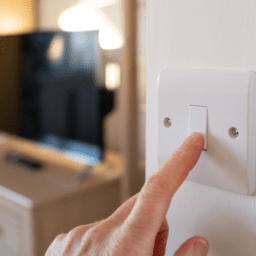Parkinson’s looks different for everyone, and so do Parkinson’s OFF times. Some people living with Parkinson’s know they are OFF when their motor symptoms, such as tremor, rigidity, slowness, and stiffness return. Others may be aware that as their medications wear off, they feel increased anxiety, fatigue, depression, or pain. Some people with Parkinson’s may not even be aware that what they are feeling is caused by their medication wearing off and may assume their returning symptoms are simply a sign of Parkinson’s progression.
Whatever OFF means for you, here are seven actions you can take to minimize OFF times and work with them to live your best life with Parkinson’s.
#1 – Know What OFF Means for You
Become your own best advocate by tracking your symptoms and paying attention to how you feel throughout each day. Do you often experience “delayed ON,” when it takes longer for your medication to start working? Does your medication tend to wear off before it’s time to take your next dose? Do your symptoms return unexpectedly, having no relationship to your dosing schedule? The more you know about your unique ON-OFF schedule, the better you can manage your OFF times.

#2 – Communicate What it Means for You to Be OFF
Once you understand what OFF means for you, share that information with your care team. When others know what symptoms to look for, they become more powerful partners. Your medical providers can adjust your medication regimen; your care partner can help you schedule activities around your OFF times; your therapists can fine tune your personalized treatments.
“My advice when it comes to talking to your doctors about OFF: Don’t hide anything from them. Be completely open. That’s how you get the best care.”
-Darryn W., diagnosed with Parkinson’s at age 44
Be armed with questions for your medical appointments. The more specific your questions, the better your doctor will understand how to treat your symptoms. Questions you might ask include:
- How long should it take my medication to start working?
- Should my medication be working the same throughout the day?
- What should I do if my medication begins to wear OFF before my next dose?
- What if I take a dose and nothing happens?
- Can I take my medication when OFF symptoms occur, even if it’s not time for my next dose?
#3 – Create Routines That Work for You
If you or your care partner know that most days you experience OFF times at certain times, schedule your activities with these in mind.
Are evenings when you often feel less than your best? Plan social outings for earlier in the day. Meet friends for lunch instead of dinner. Take a nap before heading out for a dinner event. Adjust the lighting in your home to stay safe and productive as it gets dark.

Are mornings when you feel the most ON? Schedule appointments, exercise, and gatherings for early in the day.
Working full time while living with Parkinson’s? Talk to your employer about setting a flexible work schedule that allows you to work when you are most productive.
#4 – Build a Safe Space
Create an ideal home environment that is easy to move around in, free of hazards, and appropriately lit. Grab bars, rails, push-pull doorknobs, tap-on faucets and lamps, and easy-to-grab cabinet handles can make daily routines easier. Up and down and OFF at night? Install lights along walls, stairs, and even in your toilet bowl for late-night bathroom trips. Bath grips and grab bars can also help you stay safer in the bathroom.
#5 – Know Your Limits
For many people with Parkinson’s, timing is everything. If you’re planning to be away from home for an extended period, tell a loved one where you’re going, take your medications with you, bring an in-case-of-emergency contact list, and, if it’s something you have access to, an emergency notification device. These will give you and your partner confidence that, should you experience an OFF time while you’re out and about, you will have what you need to be safe.
Heading out for a long bike ride, a boxing class, or a virtual exercise meetup? Wait to start until you’re physically, emotionally, and cognitively ready. Stop often for water (and medication, if needed) breaks; and, if possible, take a buddy with you. Explore new exercise equipment that can improve your performance and build your confidence.

If you know your medications may wear off during lengthy visits with friends, schedule get-togethers with a definitive end time. Out to dinner or the grocery store and notice your motor symptoms returning? Ask for assistance. Be prepared for how you may need to react or respond if you experience an unexpected OFF time, no matter where you may be.
#6 – Find Tools that Can Help
There are countless devices, gadgets, utensils, and other tools that can help you live well even when you’re feeling OFF. If OFF times impact your mealtimes, look for special weighted silverware and cups that make cutting, scooping, lifting, and sipping easier. Doorbell cameras that are linked to your phone can allow you to see—and even talk to—visitors even if you can’t get to the door quickly. Hands-free technology like the Google Home and Amazon Echo can help you stay connected when using a computer or phone might be difficult.
#7 – Focus on the Positive
“Having OFF times means, by definition, there must be ON times as well,” says Gavin Mogan, who has been living with Parkinson’s for 12 years. “All of the mystery and malleability of the OFF state gives me hope for future adaptation, future solutions.”
“ON is nice. It allows me to live somewhat similar to how I lived prior to my Parkinson’s diagnosis. But OFF times add interest. Unquestionably challenging, OFF almost always adds to the sensation of life. It reminds me that I’m still alive.”
-Gavin Mogan, living with Parkinson’s for 12 years
This post was written by the Davis Phinney Foundation.
This blog series is sponsored by Kyowa Kirin.
 *While the generous support of our sponsors makes our educational content available, their donations do not influence Davis Phinney Foundation content, perspective, or speaker selection.
*While the generous support of our sponsors makes our educational content available, their donations do not influence Davis Phinney Foundation content, perspective, or speaker selection.

















